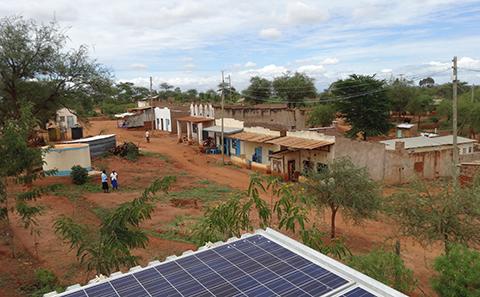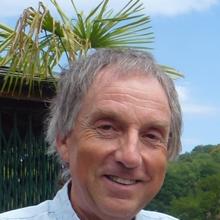Ensuring a sustainable future for cities
Viable solutions for urban efficiencies
The world’s population has tripled in the last 70 years. According to The World’s Cities in 2016 report by the UN, an estimated 54.5 per cent live in urban settlements. By 2030, this is projected to rise to 60 per cent of a larger global population.
Cities have become central to social development and economic prosperity. Research at Southampton is leading the way in ensuring that cities can meet the needs of the present without sacrificing the ability of future generations to meet their own needs.
Globalisation, urbanisation and climate change are interacting in unprecedented ways, placing conflicting pressures on our natural environment and systems, utilities and essential services. This presents an urgent challenge to politicians, planners, architects, scientists and engineers alike – how do we create resilient, sustainable cities?
“Like it or not, urbanisation is here,” says William Powrie, Professor of Geotechnical Engineering and Dean of Engineering and the Environment. “As a city grows, the transport of people, goods and services to, from and within the city becomes more problematic.”
No city can be sustainable on its own, as it relies on the hinterland around it to provide goods, services and people. At the moment, we are quite a way from sustainability. Cities are dynamic – they are either growing or declining so there is always a process of change to be managed
Considering environmental aspects
A sustainable city can be defined as one designed with environmental impact as a key consideration, particularly in terms of minimising required inputs of virgin raw materials, energy, water and food, and outputs of heat, air and water pollution and wastes needing disposal – both during construction and in operation.
Research in Engineering and the Environment at the University of Southampton is exploring many aspects of city life, to ensure that the future of cities is environmentally, economically and societally sustainable. “We are looking at transport infrastructure, water and energy supply, as well as waste management and aspects of air pollution,” says William.
The University has a 20-year history of working with Transport for London (TfL) in order to improve infrastructure and transport links. “We have helped to develop techniques for the cost-effective construction, repair and maintenance of the infrastructure needed for mass transportation systems such as metros and urban railways, and to improve the attractiveness of bus travel, walking and cycling. My personal involvement started with aspects of the construction of the Jubilee Line Extension in East London,” William explains.
Our researchers are in demand from policymakers at home and abroad in relation to traffic flow in urban areas. For the past 40 years members of Southampton’s Transportation Research Group (TRG) have produced practical solutions to congestion in cities and on motorways and trunk roads, which have rapidly been adopted by leading commercial and public sector clients in the UK and further afield.
Relieving congestion
William explains that a major focus is reduction of congestion by encouraging increased use of public transport. “Our solutions include giving buses priority on the roads, and facilitating walking and cycling, encouraging more commuters to leave their cars at home. Our forecasting of traffic peaks and troughs have also made motorways flow more freely, and our work on improvements to in-car control systems has helped reduce accidents and improve driver performance.”
According to TfL, the intelligent traffic lights systems developed at the University have generated economic benefits of £29m a year between 2009 and 2014. The early detection and identification of motorway and trunk road incidents developed at Southampton is estimated to have saved £50m a year from 2008-13. Improved techniques for the stabilisation of old railway cuttings and embankments save up to £20m a year in direct costs and a 50 per cent reduction in repair time.
To better cater for the needs of people commuting to, and living in, cities, modes of public transport are moving towards a round-the-clock service. “We are working with TfL on aspects of the Night Tube project, which aims to provide a 24-hour tube service. This has implications on maintenance as the window for repairs is getting smaller. It also increases noise nuisance from trains running all through the night,” says William.
Our solutions include giving buses priority on the roads, and facilitating walking and cycling, encouraging more commuters to leave their cars at home. Our forecasting of traffic peaks and troughs have also made motorways flow more freely, and our work on improvements to in-car control systems has helped reduce accidents and improve driver performance.
Reducing noise pollution
Rail is more environmentally-friendly than most forms of transport. However, new rail projects around the world often come under threat because of reducing tolerance of noise pollution and public opposition to more development. Although policymakers seek to expand sustainable public transport networks and increase passenger capacity, there are frequent campaigns against new rail lines, such as the objections to the proposed high-speed line HS2 and even the Marylebone-Oxford link in the UK.
Achieving an increase in rail traffic and facilitating a modal shift from other, more damaging forms of transport, requires the development and implementation of better and more cost-effective measures to reduce noise.
The Southampton Institute of Sound and Vibration Research (ISVR) has explored railway noise as a whole and shown that both the wheels and the track play a part. Although several solutions are available to reduce wheel noise, there was no practical way to cut noise from the track.
“Our engineers, in collaboration with British Steel, now Tata Steel, developed an innovative rail damper, made of steel embedded in rubber. It is attached directly to the rail and reduces the noise by attenuating the vibrations transmitted along the rail,” says William.
In addition to the supply side for goods, food and services, a sustainable city needs methods of taking waste away or dealing with it in the city itself. “No one really wants a landfill or incinerator on their doorstep, so as cities continue to grow, waste management solutions that are acceptable in terms of their environmental impact, cost and scale need to be found”.
Digesting the problem
Research by Professor Charles Banks and his team has pioneered the development of techniques for the anaerobic digestion (AD) of food waste to produce biogas. Working with industry, the technique has been developed from the laboratory bench through pilot studies to a viable commercial activity and the UK Government’s preferred option for this type of waste. Currently, around 1.7 million tonnes of food waste is processed in over 40 commercial biogas plants in the UK to produce significant quantities of renewable energy. AD is also a key topic for IEA (International Energy Agency) Bioenergy, which represents 28 countries worldwide.
The UK produces approximately 16 million tonnes of domestic and commercial food waste a year. Using this to generate biogas could offset the equivalent of 34 million tonnes of carbon dioxide, including fuel replacement, fertiliser substitution and emissions from avoided landfills.
“Our continued research into AD has provided practical solutions that have improved digestion efficiency. This has major commercial significance as the throughput of existing plants can be doubled, with proportional increases in revenue for acceptance of waste material and sales of renewable energy,” says Charles.
“No city can be sustainable on its own, as it relies on the hinterland around it to provide goods, services and people. At the moment, we are quite a way from sustainability. Cities are dynamic – they are either growing or declining so there is always a process of change to be managed,” says William.
Research at Southampton is at the forefront of developing the systems and infrastructure that connect the city internally, to its hinterland, and to other cities – all of which are essential for environmental, economic and societal sustainability. For more information, watch our Public Lecture on Sustainable Cities.
Watch the event:
Related Staff Member
Related Staff Member
You may also be interested in:

Adapting to future energy demands
Delivering energy smarter, locally and globally

Reaching 10 billion: opportunity or concern?
Understanding the facts about population change

Leading the charge
Preparing electricity infrastructure for a boom in electric vehicles

